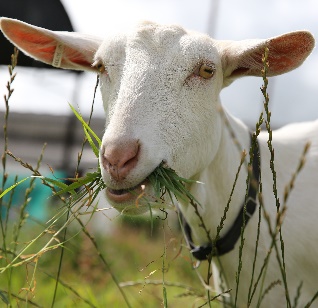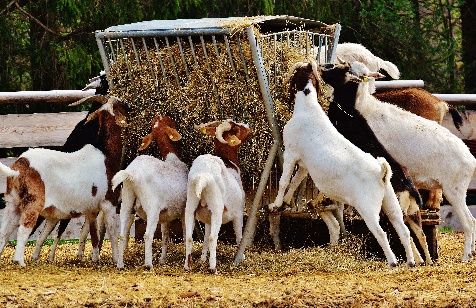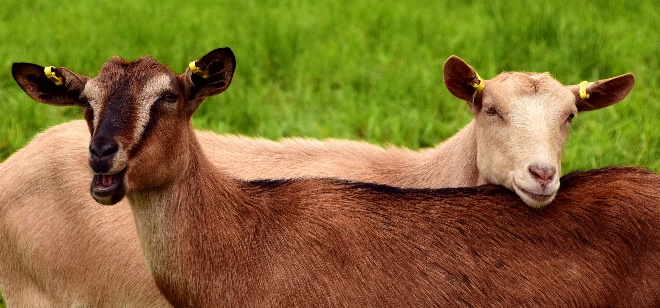Standard NAHMS Goat 2019 Study Launch Sheet
Standard Launch Sheet.docx
National Animal Health Monitoring System; Goat 2019 Study
Standard NAHMS Goat 2019 Study Launch Sheet
OMB: 0579-0354



NAHMS Goat 2019 Study
From July 1 through December 2019, the USDA’s National Animal Health Monitoring System (NAHMS), in collaboration with the National Agricultural Statistics Service (NASS), will conduct its second national study of the U.S. goat industry. The NAHMS Goat 2019 study will take an in-depth look at the priority issues facing U.S. goat operations and provide new and valuable information regarding animal health and management practices in this growing industry. Approximately 4,700 goat producers from 25 of the Nation’s major goat-producing States (see map) will have the opportunity to participate in the study, if they have an inventory of at least five adult goats.
Background
A program within the USDA’s Animal Plant Health Inspection Service (APHIS), NAHMS collects scientifically accurate data for U.S. livestock, poultry, and aquaculture industries on a rotating basis.
For the goat study, priority issues facing the industry were identified from 1,272 responses via a needs-assessment questionnaire and from input from meetings with representatives from various segments of the goat industry, including stakeholders and government agencies.

October 2018

“Through studies such as this one, we can evaluate the needs of our goat populations. We can be proactive and progressive in addressing the pressing needs we face using the most current data to support innovative ideas in improving the ways we care for our goats.”
—Susan Myers, DVM, AASRP President
Study Focus
The NAHMS Goat 2019 study is designed to provide individual participants and stakeholders with valuable information on the U.S. goat industry. The NAHMS Goat 2019 study will
Describe changes in animal health, nutrition, and management practices from 2009 to 2019,
Describe practices producers use to control internal parasites and reduce anthelmintic resistance,
Describe antimicrobial stewardship on goat operations and estimate the prevalence of enteric pathogens and antimicrobial resistance patterns,
Describe management practices associated with, and producer-reported occurrence of, economically important goat diseases, and
Provide a serologic bank for future research.

“The 2019 Goat study is an opportunity for U.S. goat producers to have your voices heard. What are the issues that matter most to you? How can cooperative extension services, especially from extension veterinarians, help you with these issues? The information provided from the results of this study will guide the priorities for future goat research and program opportunities.”
—Dr. Patty Scharko, President
American Association of Extension Veterinarians
When is the study and how is it conducted?
As previously mentioned, goat producers with an inventory of at least 5 adult goats in 25 of the major goat-producing States will be asked to participate. Producers that choose to complete both phase I and phase II of the study will be offered free biologic testing.
Phase I—In July 2019, NASS representatives will contact potential participants. Producers that choose to participate will be administered a questionnaire and asked if they would like to continue to phase II.

“Data collection, management practices, research direction, and marketing strategies are all vital for the well being of our goat industry. This NAHMS study is a critical part of the future development and advancement of our industry. Please take the time to accurately complete the study which will provide each participant specific information about the health of their flock as well as providing a quantum leap forward for our entire industry.”
—Tom Boyer
Producer and Past President of the American Goat Federation
Phase II—Beginning in September 2019, goat producers who agreed to continue in the study will be contacted by APHIS or State veterinary health professionals to schedule an in-person interview and collect biologics. Free biologic testing will include pre- and postdeworming fecal parasite egg counts, scrapie resistant genotyping, and Salmonella, E. coli, and Campylobacter culture results. Data collection will end in December 2019.
Benefits to participating
Producers that fully participate in the NAHMS Goat 2019 study will receive free
Fecal-egg count reduction test results for gastrointestinal parasites,
Scrapie-resistant genotyping, and
Salmonella, E. coli, and Campylobacter fecal culture results.
The industry will benefit from
Current and scientifically valid estimates of management practices and disease prevalence,
Important information regarding trade and the overall health of the goat industry; and
Data that will help policymakers and industry to make informed decisions, while at the same time helping researchers and others identify vital issues related to goat health and productivity.
Confidentiality
Because NAHMS relies on voluntary participation, the privacy of every participant is protected. Only those collecting the data know the identity of respondents. No name or contact information will be associated with individual data, and no data will be reported in a way that could reveal the identity of a participant. Data are presented only in an aggregate manner.

“…in addition to providing useful feedback to participants about the health status of their goats, the information from this study will play a critical role in prioritizing [goat] research needs and justifying research dollars…”
—Joan Dean Rowe, DVM
American Dairy Goat Association member and breeder
A scientific approach
NAHMS collects and reports accurate and useful information on animal health and management in the United States. Since 1990, NAHMS has developed national estimates on disease prevalence and other factors related to the health of U.S. beef cattle, sheep, goats, dairy cattle, swine, equine, poultry, and catfish populations.
The science-based results produced by NAHMS have proven to be of considerable value to the U.S. livestock, poultry, and aquaculture industries as well as to other animal health stakeholders.
NAHMS studies are:
National in scope,
Science based,
Statistically valid,
Collaborative,
Voluntary, and
Confidential.
____________________________
For more information, contact:
USDA–APHIS–VS–CEAH–NAHMS
NRRC Building B, M.S. 2E7
2150 Centre Avenue
Fort Collins, CO 80526-8117
970.494.7000
Or visit NAHMS at http://www.aphis.usda.gov/nahms
#786.1018
____________________________________
The U.S. Department of Agriculture (USDA) prohibits discrimination in all its programs and activities on the basis of race, color, national origin, age, disability, and where applicable, sex, marital status, familial status, parental status, religion, sexual orientation, genetic information, political beliefs, reprisal, or because all or part of an individual’s income is derived from any public assistance program. (Not all prohibited bases apply to all programs.) Persons with disabilities who require alternative means for communication of program information (Braille, large print, audiotape, etc.) should contact USDA’s TARGET Center at (202) 720–2600 (voice and TDD). To file a complaint of discrimination, write to USDA, Director, Office of Civil Rights, 1400 Independence Avenue, S.W., Washington, D.C. 20250–9410, or call (800) 795–3272 (voice) or (202) 720–6382 (TDD). USDA is an equal opportunity provider and employer.
United
States
Department
of
Agriculture • Animal
and
Plant
Health
Inspection
Service
•
Safeguarding
American
Agriculture



| File Type | application/vnd.openxmlformats-officedocument.wordprocessingml.document |
| Author | aberry |
| File Modified | 0000-00-00 |
| File Created | 2021-01-15 |
© 2025 OMB.report | Privacy Policy